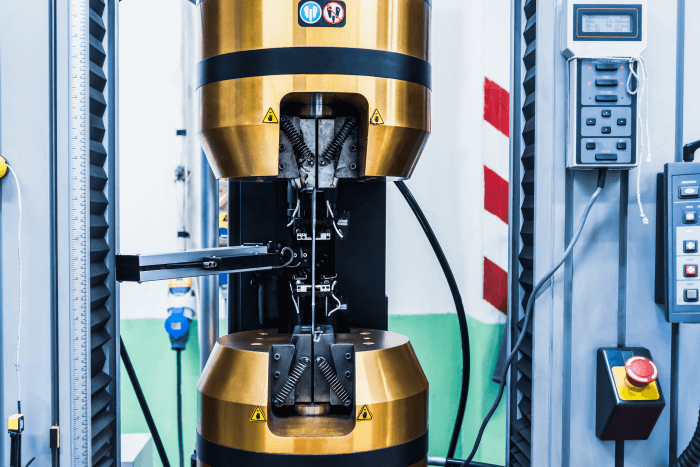Elongation at Break – Definition, Testing, Material Selection
Elongation at break is a key property that measures the deformation capacity of a material before it eventually snaps or breaks, providing insights into the material’s behavior and performance. This crucial measurement is closely related to tensile strength, which determines a material’s ability to withstand pulling forces without breaking.
The longer the elongation at break, the greater the material’s flexibility and ductility. It represents how much a material can stretch or elongate under tension before reaching its breaking point.
In metals, elongation at break showcases malleability and ensures they can withstand deformation without fracturing easily. Plastics with higher elongation at break are more capable of enduring stress and strain without undergoing permanent damage. Understanding the importance of elongation at break helps select the right materials for diverse applications, ensuring optimal performance and durability.
Testing Methods for Elongation at Break
Elongation at break is a key indicator of a material’s ability to stretch before reaching its breaking point, so accurate data is vital for material selection. To precisely determine this value, various testing methods are employed.
When conducting tests, manufacturing and quality control considerations play an essential role. These considerations include:
- Ensuring that sampling is representative of the material being tested.
- Using appropriate and calibrated testing equipment to obtain accurate measurements.
- Following standardized testing procedures to maintain consistency.
By considering these factors, manufacturers can ensure the reliability and integrity of their testing results, which are critical for maintaining consistent material properties. Two methods of testing are described below.
Tensile Testing
Tensile testing involves subjecting a material sample to tension until it fractures. The sample is held between two clamps and pulled in opposite directions until it breaks. The amount of elongation before fracture is recorded and used to calculate the final value.
Elongation Testing
Elongation testing is another method utilized for measurement. Unlike tensile testing, this method focuses solely on measuring the elongation of a material sample without causing it to fracture. The sample is stretched until a specified strain value is achieved, and the resulting elongation is measured.
How to Calculate Elongation at Break
The elongation of the material sample at the point of fracture is measured by comparing the original length of the sample to its final length after fracturing. The percentage of elongation is then calculated by dividing the change in length by the original length and multiplying by 100.
Mechanical Properties and Plastic Deformation
Elongation at break is just one of the mechanical properties used to assess a material’s performance. It is closely related to other properties like yield strength, resilience, and plastic deformation. Manufacturers often evaluate it alongside these properties to comprehensively understand a material’s behavior.
For example, this property is a valuable measure of a material’s ability to undergo plastic deformation. Plastic deformation refers to the permanent change in the shape of a material when subjected to stress. Materials with high elongation at break have greater plasticity and can undergo significant deformation without fracture.
Understanding the relationship between elongation at break and plastic deformation is crucial in various industrial applications. It allows engineers and manufacturers to select materials that can withstand the required stress and deformation without failure.
Consideration of Elongation at Break in Material Selection
Elongation at break is also widely used for material comparisons and benchmarking. By evaluating and selecting appropriate materials based on their desired levels of ductility and flexibility, industries can ensure that their products perform optimally under different operating conditions.
Materials with higher values are generally preferred in applications where the material needs to undergo extensive deformation without failure. On the other hand, materials with lower values may be desired for applications where high rigidity and resistance to deformation are required.
By considering elongation at break, engineers can make informed decisions regarding material selection and performance optimization, enhancing product reliability and customer satisfaction. If you are designing an electronic product that needs protective coatings and are having trouble identifying which material to choose, please contact our Applications Engineers for answers. Or if you are interested in learning more about thin film protective coating capabilities, such as elongation yield or Young’s modulus of polymers, browse our site.
Discover how HZO can protect your product

